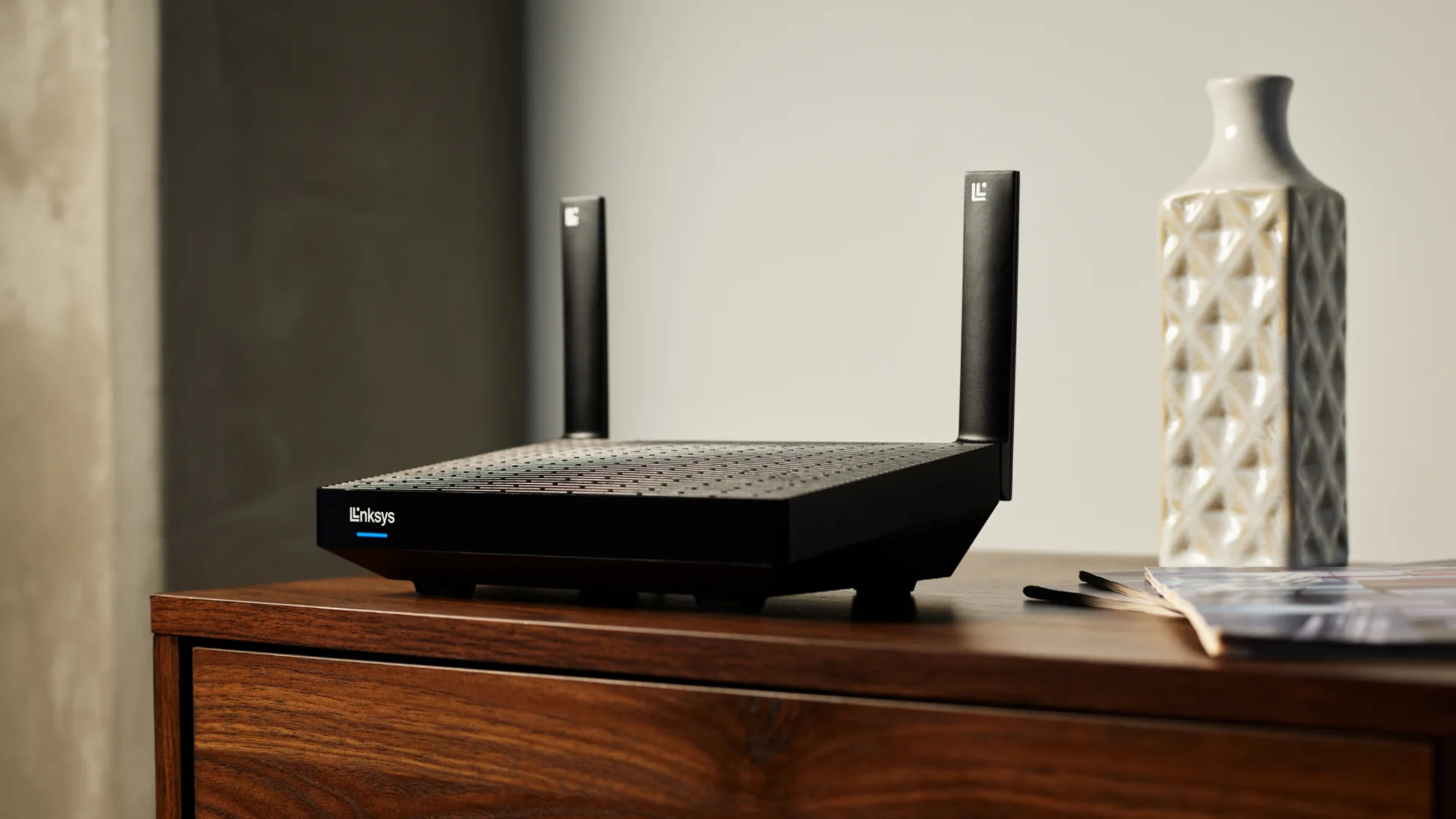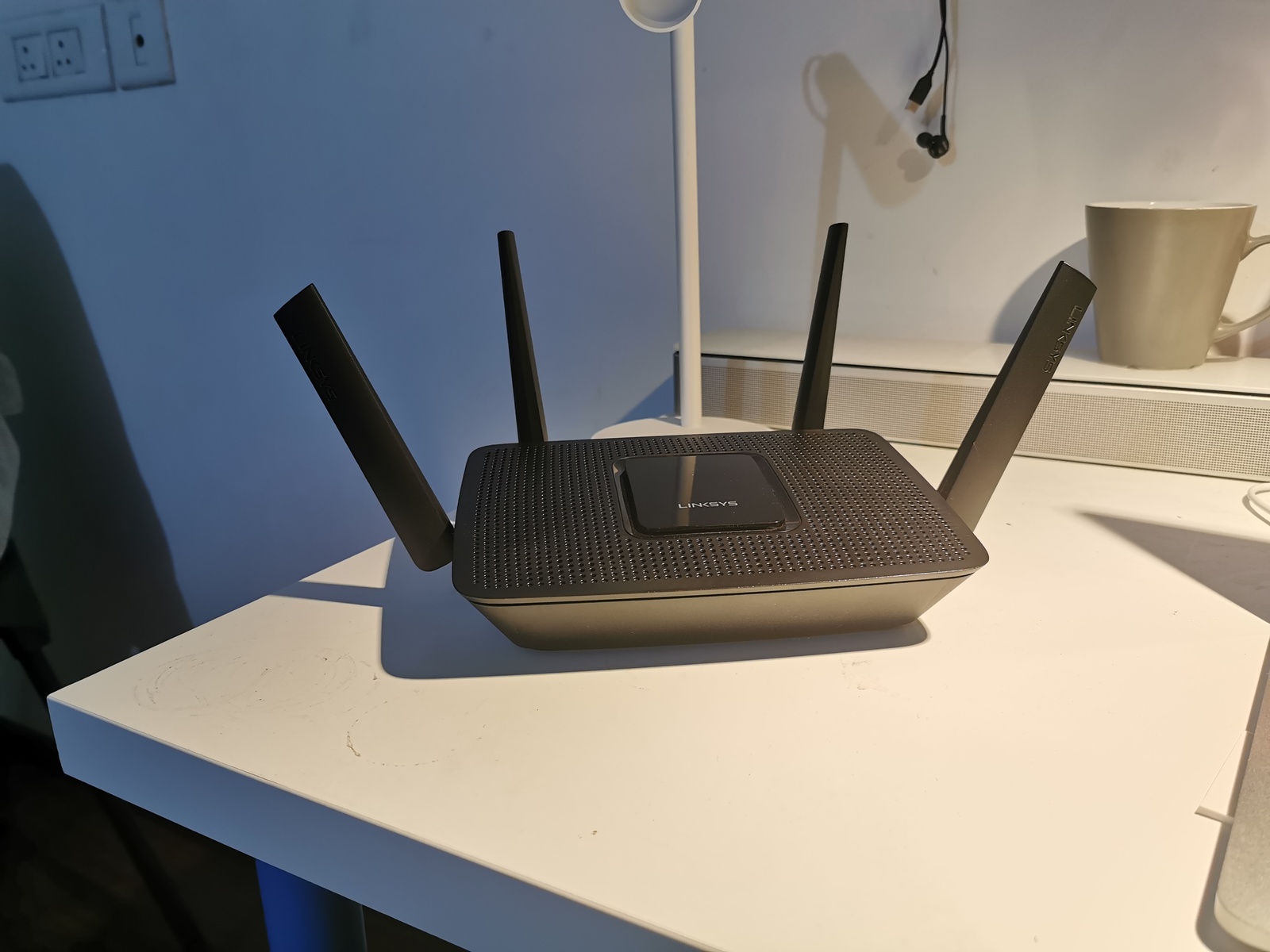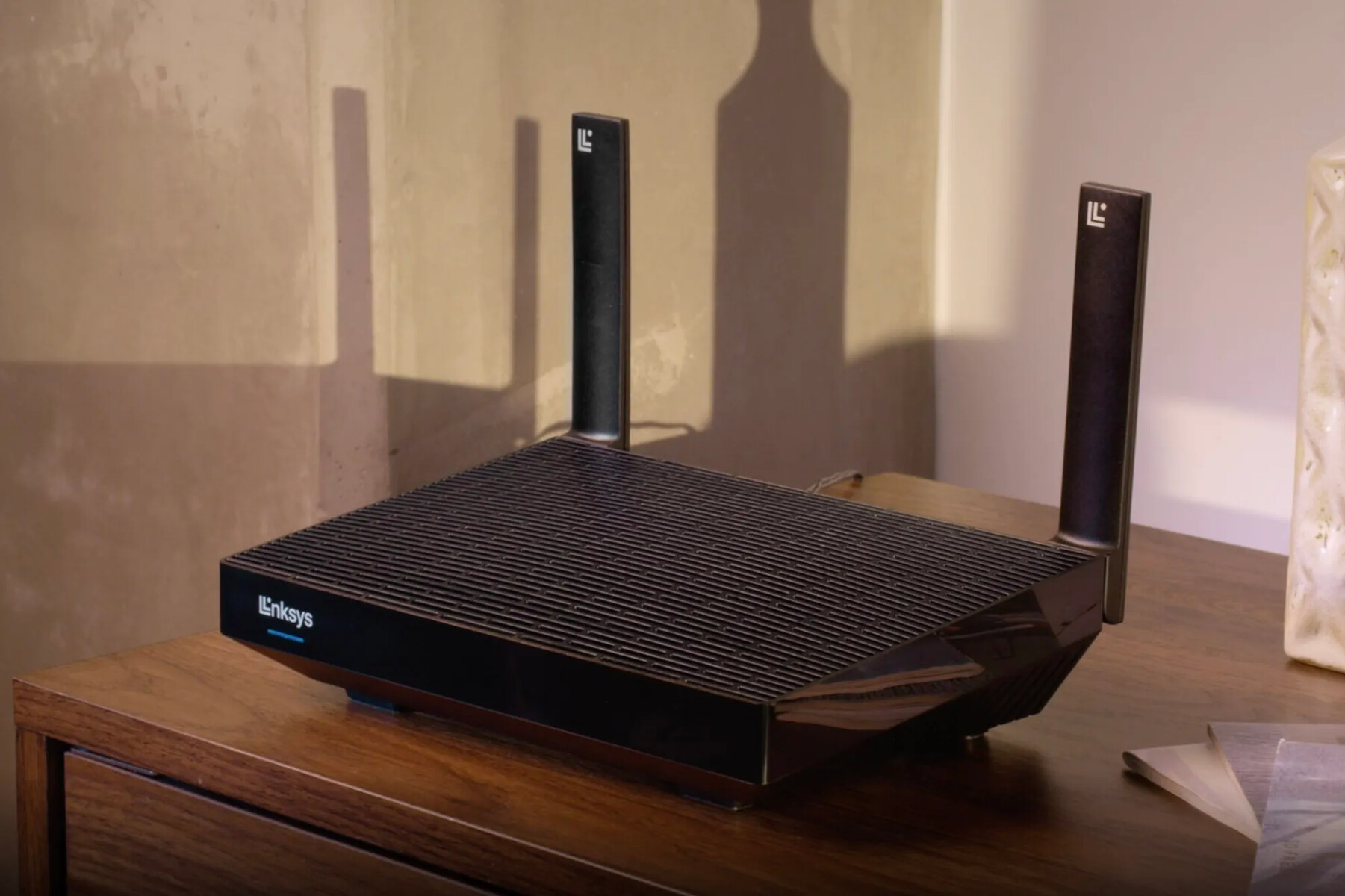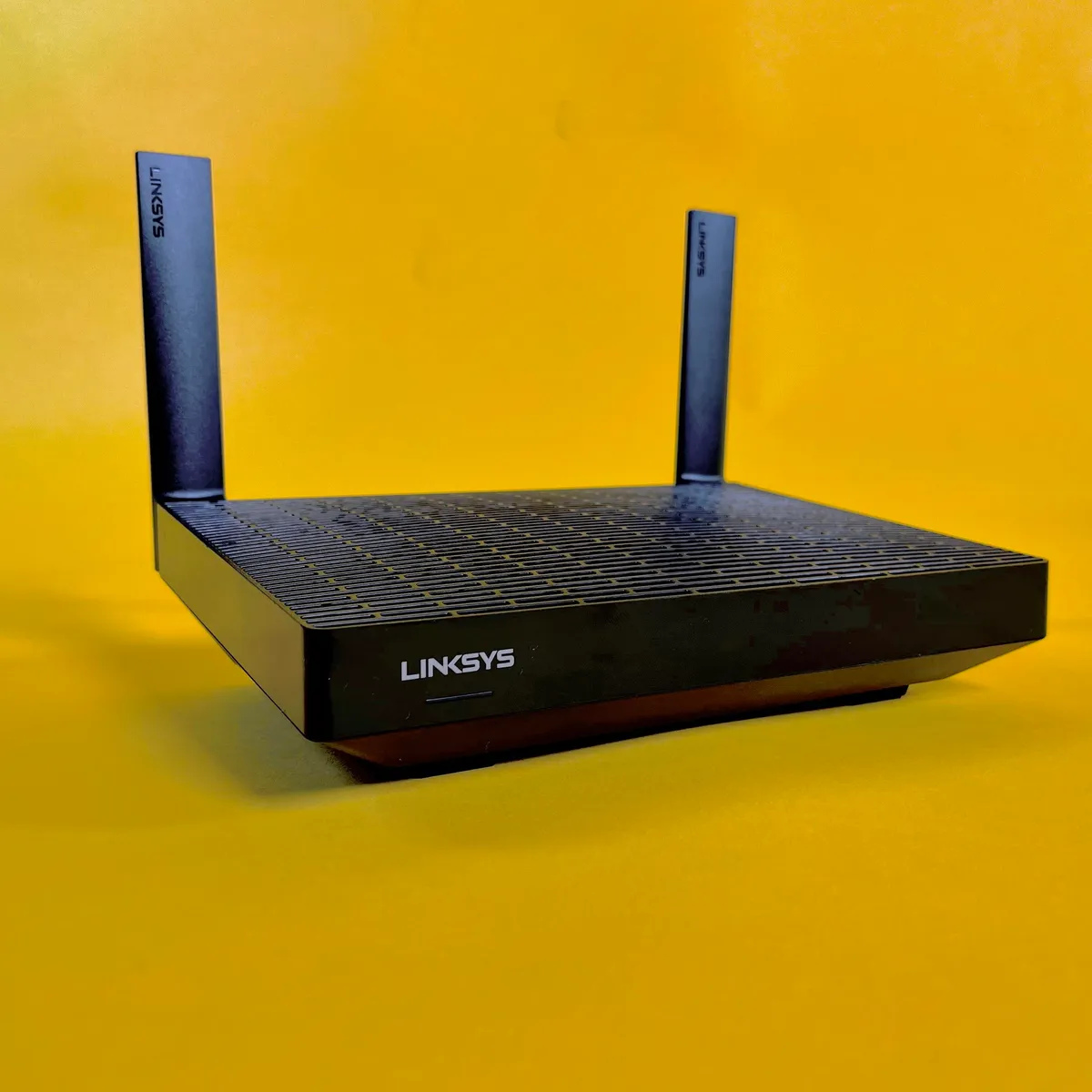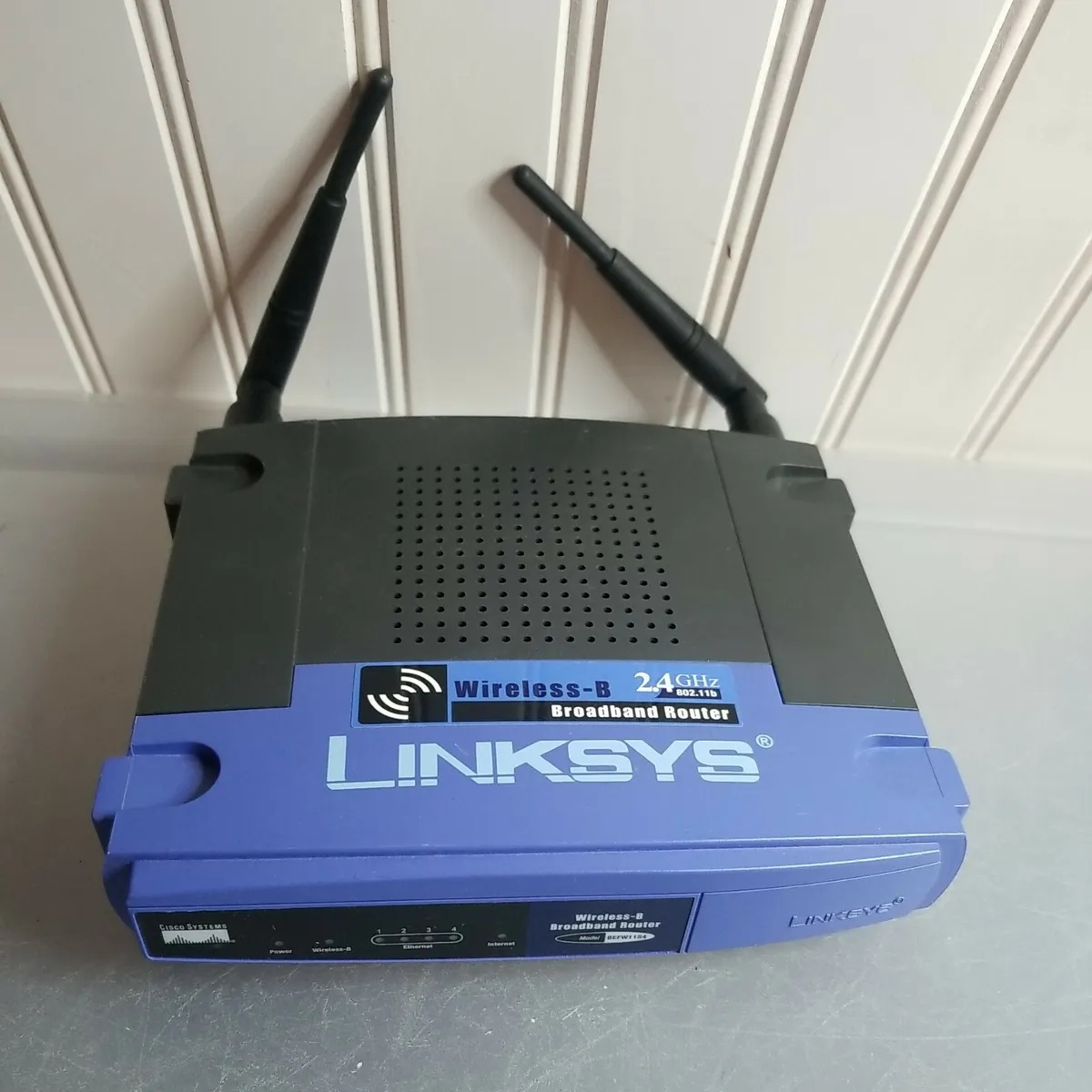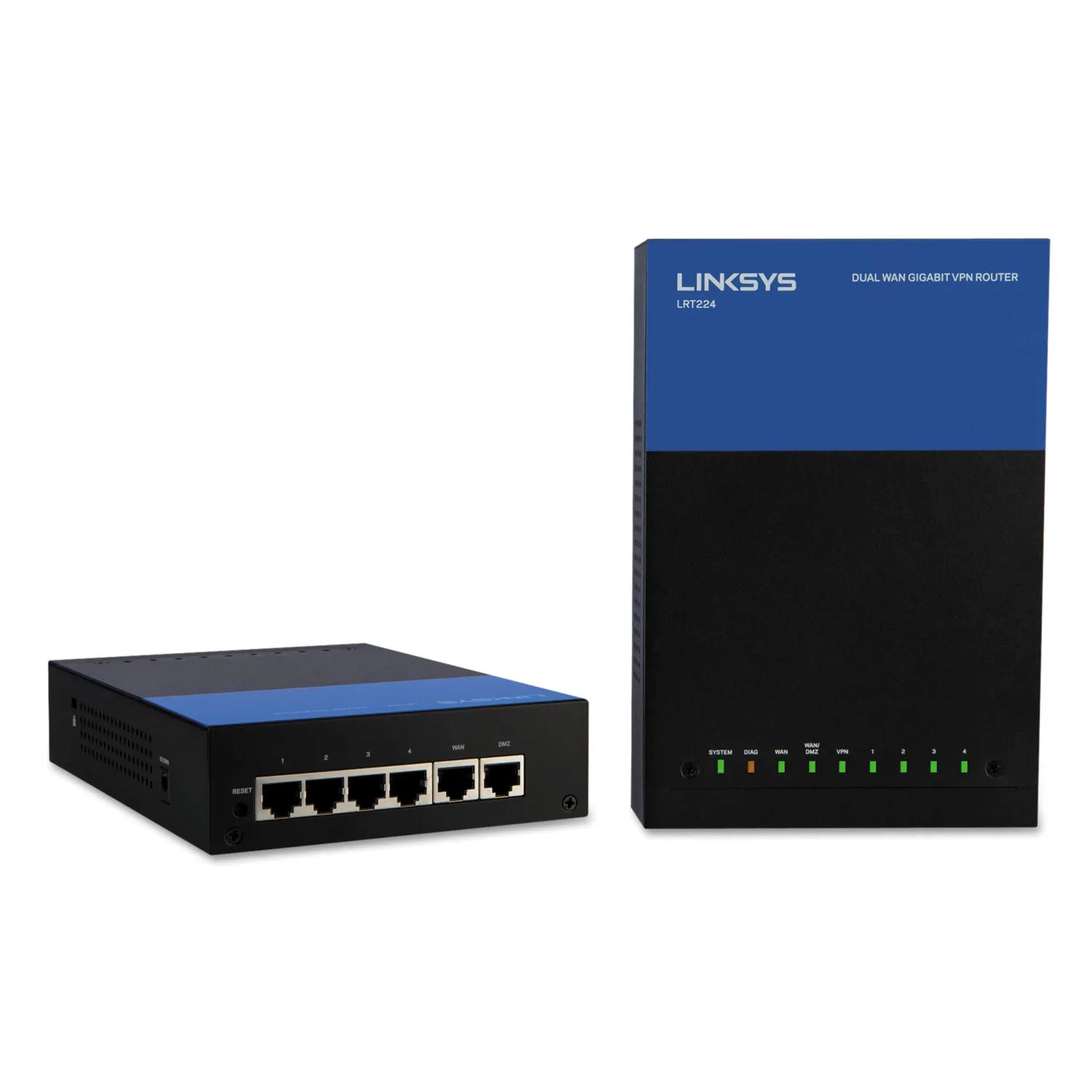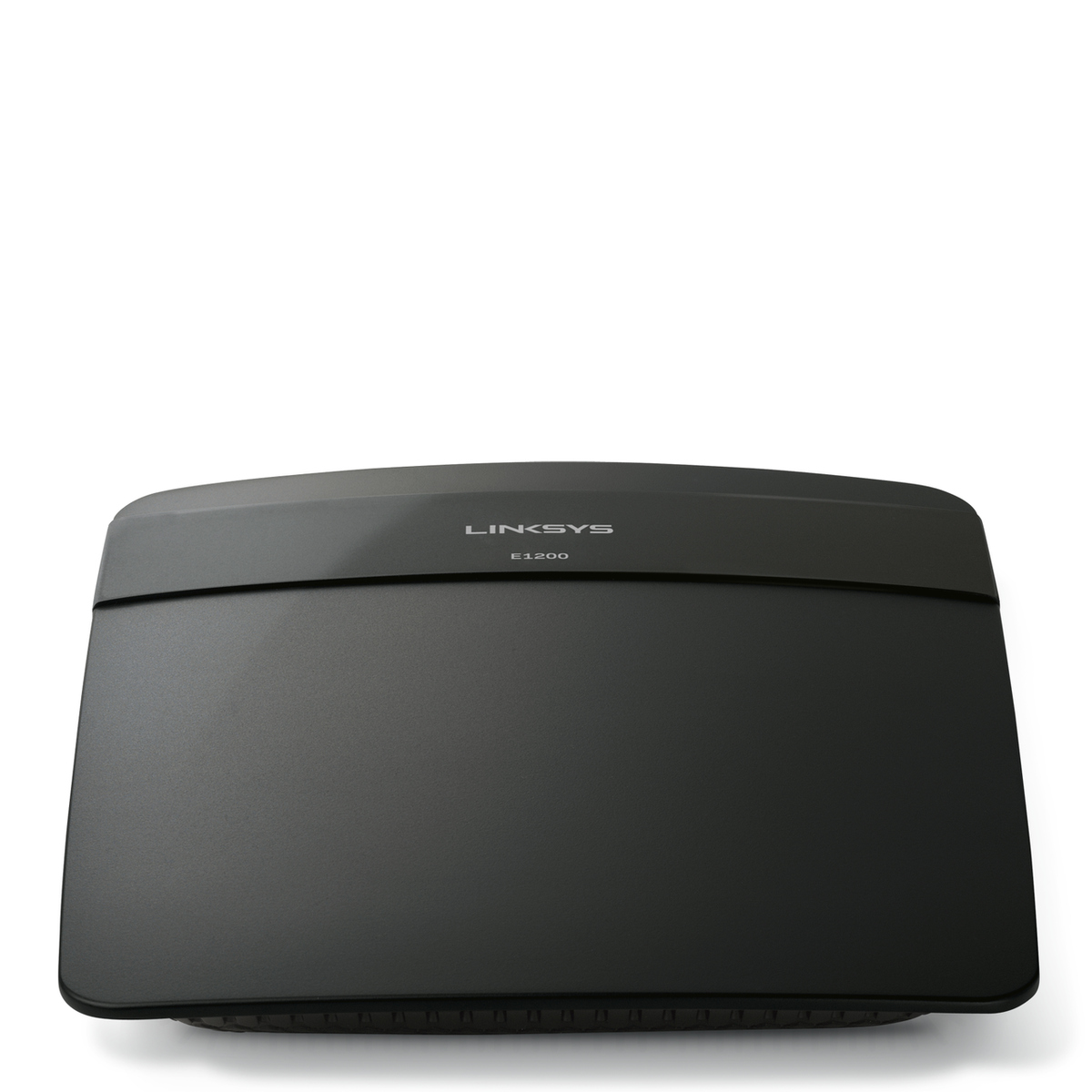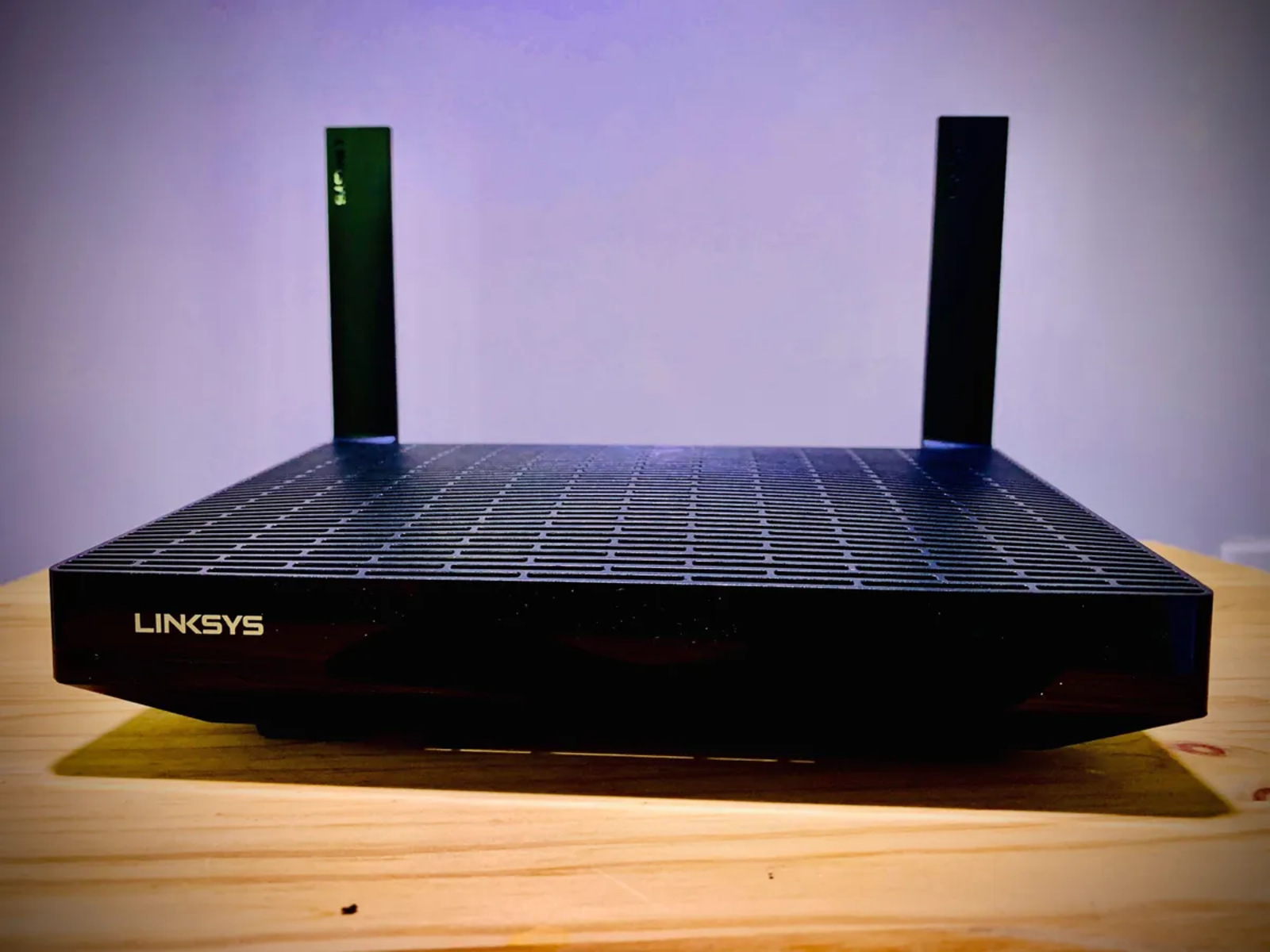Introduction
Welcome to the world of wireless networking! With the increasing reliance on wireless devices and the need for constant connectivity, securing your Linksys wireless router has become more important than ever.
Wireless routers provide a convenient way to connect to the internet and share files and resources with multiple devices. However, if left unsecured, they can also be vulnerable to unauthorized access and hacking. Taking the necessary steps to secure your Linksys wireless router can protect your personal information, prevent your network from being exploited, and give you peace of mind.
In this article, we will explore some essential techniques to ensure the security of your Linksys wireless router. From updating your router firmware to enabling WPA2 security and setting up MAC address filtering, we will cover everything you need to know to keep your network safe and secure. So let’s dive in and learn how to safeguard your Linksys wireless router.
Up next, we’ll discuss the importance of updating router firmware and why it should be the first step in securing your Linksys wireless router.
Update Router Firmware
One of the most crucial steps in securing your Linksys wireless router is to keep its firmware up to date. Router firmware is the software that controls the functioning of your router, and, like any other software, it can have vulnerabilities that may be exploited by hackers. By regularly updating your router firmware, you ensure that any known security loopholes are patched, keeping your network secure.
Updating the firmware of your Linksys wireless router is a relatively simple process. Begin by checking for the latest firmware version on the Linksys website. Locate your router’s model number and download the firmware file specific to that model.
Once you have downloaded the firmware file, access your router’s administration panel by typing its default IP address in your web browser. Log in using your credentials, and navigate to the firmware update section.
Click on the “Browse” button and select the firmware file you downloaded earlier. Then, follow the on-screen instructions to initiate the firmware update. It is crucial to ensure that the update process is not interrupted, as this can cause damage to your router.
After the firmware update is complete, restart your router to apply the changes. Your Linksys wireless router is now running on the latest firmware, which greatly enhances its security features.
Regularly checking for firmware updates and applying them promptly is paramount to maintaining the security of your network. Manufacturers often release firmware updates to address security vulnerabilities as they are discovered, so staying up to date is essential.
In the next section, we will discuss how changing the default router login credentials can add an extra layer of security to your Linksys wireless router.
Change Default Router Login Credentials
When you purchase a Linksys wireless router, it comes with default login credentials that are widely known and easily accessible to anyone. These default credentials are often the same for all routers of that model, making it effortless for attackers to gain unauthorized access to your network.
To secure your Linksys wireless router, the first step is to change the default login credentials. This ensures that only you, or those you authorize, can access the router’s administration panel.
To change the default login credentials, begin by accessing your router’s administration panel. Open your web browser and type the router’s default IP address into the address bar. Then, enter the default username and password, which can usually be found in the router’s user manual or on the manufacturer’s website.
Once logged in, navigate to the administration or settings section and locate the option to change the password. Choose a strong and unique password that includes a combination of uppercase and lowercase letters, numbers, and special characters. Avoid using easily guessable information, such as your name or address, in the password.
After entering the new password, save the changes and log out of the router’s administration panel. From now on, you will need to use the updated login credentials to access the router settings.
Changing the default login credentials is an essential step in securing your Linksys wireless router. It prevents unauthorized access to your network and protects sensitive information.
In the next section, we will explore how to enable WPA2 security, which is crucial for ensuring the confidentiality and integrity of your wireless network.
Enable WPA2 Security
Wireless Protected Access 2 (WPA2) is the most secure encryption standard available for wireless networks. Enabling WPA2 security on your Linksys wireless router ensures that your network communications are encrypted and protected from unauthorized access.
To enable WPA2 security, access your router’s administration panel. Open a web browser and enter the router’s IP address into the address bar. Log in using your credentials.
Navigate to the wireless settings section and locate the security options. Look for an option called “Security Mode” or “Encryption Type.” Choose WPA2 from the available options.
Depending on your router, you may have to set a pre-shared key, also known as a Wi-Fi password. Choose a strong password that is at least 8 characters long and includes a combination of uppercase and lowercase letters, numbers, and symbols. This password will be required for connecting to your wireless network.
Save the changes and restart your router if prompted.
With WPA2 security enabled, your Linksys wireless router will encrypt all wireless communication and ensure that only devices with the correct password can connect to your network. This significantly reduces the risk of unauthorized access and protects your data from being intercepted by malicious users.
In the next section, we will discuss the importance of changing the network name (SSID) and disabling the broadcasting of your router’s SSID.
Change Network Name (SSID)
The Network Name, also known as the Service Set Identifier (SSID), is the name that identifies your wireless network. By default, Linksys routers often come with a generic and easily recognizable SSID, such as “Linksys” or “Netgear.” Changing the SSID is a crucial step in securing your network and making it more difficult for unauthorized users to identify your router.
To change the SSID, access your router’s administration panel using a web browser and the router’s default IP address. Log in using your credentials.
Navigate to the wireless settings section and look for an option called “SSID” or “Network Name.” Enter a unique name that is not personally identifiable or easily guessable. Avoid using your name, address, or any other personal information in the SSID.
While you’re in the wireless settings section, you may also have the option to disable the broadcasting of your SSID. This means that your router will not openly broadcast its network name, making it harder for potential attackers to identify and target your network. However, keep in mind that disabling SSID broadcasting may make it more challenging for your devices to connect to the network, as they will need to be manually configured.
Save the changes to update your network name, and any devices that were previously connected to your network will need to be reconnected using the new SSID.
Changing the network name (SSID) adds an extra layer of security to your Linksys wireless router by making it more difficult for unauthorized users to identify and target your network. Combined with other security measures, such as WPA2 encryption, it helps create a robust and secure wireless network.
In the next section, we will explore how disabling remote management further enhances the security of your Linksys wireless router.
Disable Remote Management
Remote management allows you to access and manage your Linksys wireless router’s settings from a different location, such as through the internet. While it can be convenient, enabling remote management also opens up a potential security risk. It leaves your router vulnerable to unauthorized access and control if not properly secured.
To enhance the security of your Linksys wireless router, it is recommended to disable remote management. This way, only devices connected to your local network will be able to access and manage the router’s settings.
To disable remote management, access your router’s administration panel using a web browser and the router’s default IP address. Log in using your credentials.
Navigate to the administration or management settings section and search for an option related to remote management. Uncheck the box or toggle the setting to disable remote management.
Save the changes and ensure that remote management is disabled. This step prevents unauthorized users from accessing and controlling your router’s settings from outside your network.
By disabling remote management, you significantly reduce the risk of potential security breaches and unauthorized access to your Linksys wireless router. However, it is important to note that if you need remote access for legitimate reasons, you can enable it but be sure to implement additional security measures, such as using a secure VPN connection or setting up a strong and unique password for remote access.
In the next section, we will discuss how disabling Wi-Fi Protected Setup (WPS) can further enhance the security of your Linksys wireless router.
Disable Wi-Fi Protected Setup (WPS)
Wi-Fi Protected Setup (WPS) is a feature that simplifies the process of connecting devices to a wireless network. However, it is also known for its vulnerabilities and potential security risks. Disabling WPS on your Linksys wireless router can help prevent unauthorized access to your network.
WPS uses a PIN or a push-button method to authenticate devices when connecting to your wireless network. Unfortunately, the PIN method is susceptible to brute force attacks, where an attacker repeatedly guesses the PIN until successful. Disabling WPS removes this potential security vulnerability.
To disable WPS, access your router’s administration panel using a web browser and the router’s default IP address. Log in using your credentials.
Navigate to the Wi-Fi or wireless settings section and locate the WPS settings. Look for an option to disable WPS. Toggle the setting to turn off WPS functionality.
Save the changes to disable WPS on your Linksys wireless router. This step eliminates a potential entry point for attackers and further enhances the security of your network.
It is important to note that disabling WPS may require you to manually enter the Wi-Fi password when connecting new devices to your network. However, the added security and peace of mind are worth the extra step.
In the next section, we will discuss how enabling MAC address filtering can provide an additional layer of security to your Linksys wireless router.
Enable MAC Address Filtering
MAC address filtering is another effective security feature offered by your Linksys wireless router. Each device connected to a network has a unique MAC address, which can be used to control access to your network. Enabling MAC address filtering allows you to specify which devices are allowed to connect to your network, adding an extra layer of security.
To enable MAC address filtering, access your router’s administration panel using a web browser and the router’s default IP address. Log in using your credentials.
Navigate to the wireless settings section and look for an option related to MAC address filtering. Depending on your router model, this option may be labeled as “MAC Filtering” or “Access Control”.
Enable MAC address filtering and add the MAC addresses of the devices you want to allow access to your network. You can find the MAC address of each device in its network settings or device information.
You have the option to either allow or deny access based on MAC addresses. If you choose to only allow specific MAC addresses, any device that is not listed will be denied access to your network.
Save the changes to enable MAC address filtering on your Linksys wireless router. From now on, only devices with MAC addresses on your approved list will be able to connect to your network.
Enabling MAC address filtering provides an additional layer of security by allowing you to control which devices can access your network. This prevents unauthorized devices from connecting, even if they have the correct SSID and password.
In the next section, we will discuss the importance of disabling the guest network to further enhance the security of your Linksys wireless router.
Disable Guest Network
The guest network feature on your Linksys wireless router allows you to create a separate network for visitors or temporary guests. While it can be convenient for providing internet access to guests, it also poses a potential security risk. Disabling the guest network helps mitigate this risk and strengthens the security of your network.
The guest network operates independently from your main network and often has its own SSID and password. This means that anyone with access to the guest network can potentially gain unauthorized access to your network resources or compromise the security of your main network.
To disable the guest network, access your router’s administration panel through a web browser using the default IP address and login credentials.
Navigate to the wireless settings section, and look for an option related to the guest network. It may be labeled as “Guest Network,” “Guest Access,” or something similar.
Toggle the setting to disable the guest network or uncheck the box if there is an option to enable or disable it. Save the changes to apply the new settings on your Linksys wireless router.
With the guest network disabled, only devices connected to your primary network will have access to your resources and information. This reduces the risk of unauthorized access and potential security breaches.
Remember, if you occasionally need to provide temporary guest access, you can enable the guest network during those times and disable it afterward to maintain the security of your network.
In the next section, we will discuss the importance of enabling firewall protection on your Linksys wireless router.
Enable Firewall Protection
A firewall acts as a barrier between your network and the internet, monitoring and controlling incoming and outgoing network traffic. Enabling firewall protection on your Linksys wireless router is a crucial step in safeguarding your network from external threats and unauthorized access.
Firewall protection helps prevent unauthorized access to your network by blocking suspicious or malicious incoming connections. It also controls the outgoing traffic, ensuring that only legitimate communication is allowed, and helps identify and mitigate potential security risks.
To enable firewall protection on your Linksys wireless router, access the router’s administration panel using a web browser and the router’s default IP address. Login using your credentials.
Navigate to the security settings section, and look for an option related to firewall or security features. Depending on your router model, this option may be labeled as “Firewall,” “Security,” or “Advanced Settings.”
Enable the firewall protection by toggling the setting or checking the box. Some routers may offer different levels of firewall protection, such as low, medium, or high. Choose the appropriate setting based on your needs and comfort level.
Save the changes to enable firewall protection on your Linksys wireless router. The firewall will now actively monitor and filter network traffic, helping to ensure the security and integrity of your network.
It is important to note that while a firewall provides effective protection, it is still essential to keep your devices and software up to date with the latest security patches and updates. This comprehensive approach to security will greatly enhance the protection of your network.
In the next section, we will discuss the importance of disabling UPnP (Universal Plug and Play) to further bolster the security of your Linksys wireless router.
Disable UPnP
Universal Plug and Play (UPnP) is a network protocol that allows devices on a network to discover and connect with each other seamlessly. While UPnP can be convenient for certain applications, it also poses potential security risks, as it opens up additional entry points for unauthorized devices and services.
To enhance the security of your Linksys wireless router, it is recommended to disable UPnP. This step prevents devices or applications from automatically configuring network settings and accessing your network without your knowledge or consent.
To disable UPnP, access your router’s administration panel using a web browser and the router’s default IP address. Log in using your credentials.
Navigate to the router settings section, and look for an option related to UPnP. It may be labeled as “UPnP,” “Universal Plug and Play,” or “Device Discovery.”
Toggle the setting to disable UPnP functionality or uncheck the box if there is an option to enable or disable it. Save the changes to apply the new settings on your Linksys wireless router.
By disabling UPnP, you eliminate any potential security vulnerabilities associated with automatic network configuration and device discovery. It prevents unauthorized devices from accessing your network and reduces the risk of potential security breaches.
Remember, in some cases, certain applications or devices may require UPnP for proper functionality. If you encounter any issues after disabling UPnP, you can enable it temporarily but be sure to monitor network activity and utilize other security measures to ensure a safe and secure network.
In the next section, we will discuss the importance of disabling the DHCP server on your Linksys wireless router.
Disable DHCP Server
The Dynamic Host Configuration Protocol (DHCP) server on your Linksys wireless router automatically assigns IP addresses to devices on your network. While DHCP is convenient, disabling it can provide more control over your network and enhance security.
By disabling the DHCP server, you can manually assign IP addresses to devices, making it more difficult for unauthorized devices to connect to your network. It also helps prevent potential IP conflicts and provides additional security against certain types of network attacks.
To disable the DHCP server on your Linksys wireless router, access the router’s administration panel using a web browser and the router’s default IP address. Log in using your credentials.
Navigate to the LAN or network settings section and locate the DHCP server settings. It may be labeled as “DHCP Server,” “LAN Setup,” or something similar.
Toggle the DHCP server setting to disable it. Save the changes to apply the new settings.
Once the DHCP server is disabled, you will need to manually assign IP addresses to each device connected to your network. This can be done through the network settings on each device or by configuring static IP addresses on your router.
Keep in mind that disabling the DHCP server will require you to have a good understanding of IP addressing and network configuration. It is recommended for more advanced users who want increased control over their network.
Disabling the DHCP server can provide an extra layer of security by allowing you to manually manage IP addresses and control who has access to your network. However, it is important to understand the implications and be prepared to handle the additional configuration requirements.
In the next section, we will summarize the key steps discussed in this article and emphasize the importance of implementing these security measures for your Linksys wireless router.
Conclusion
Securing your Linksys wireless router is of utmost importance to protect your network and personal information from potential threats. By following the steps outlined in this article, you can significantly enhance the security of your router and ensure a safe online experience.
We began by discussing the importance of updating the router firmware. Keeping your router up to date with the latest firmware version is crucial for patching any known security vulnerabilities and maintaining a secure network.
Next, we explored the significance of changing the default router login credentials. By setting a strong and unique password, you prevent unauthorized access to your router’s administration panel.
We then covered the importance of enabling WPA2 security, the most robust encryption standard available for wireless networks. This protects your network communications and ensures that only authorized devices can connect to your network.
Changing the network name (SSID) and disabling the broadcasting of the SSID add an extra layer of security by making it harder for potential attackers to identify your network.
Disabling remote management prevents unauthorized access to your router’s settings from outside your network, ensuring that only local devices can manage and configure your router.
We also discussed the importance of disabling Wi-Fi Protected Setup (WPS), which can be vulnerable to brute force attacks. Disabling it removes potential security risks and strengthens the security of your network.
Enabling MAC address filtering allows you to control which devices can connect to your network, providing an extra layer of protection against unauthorized access.
Disabling the guest network prevents potential security breaches and ensures that only trusted devices have access to your main network resources.
Enabling firewall protection on your router serves as a vital defense mechanism, monitoring and controlling network traffic to prevent unauthorized access and potential security threats.
Disabling UPnP helps mitigate security risks associated with automatic network configuration and device discovery, ensuring that only authorized devices interact with your network.
Finally, we discussed the option to disable the DHCP server, which gives you more control over network IP address assignments and can enhance security.
By implementing these security measures, you can significantly reduce the risk of unauthorized access, data breaches, and other security vulnerabilities. It is crucial to remain vigilant and stay updated on the latest security practices to keep your Linksys wireless router and network secure.







